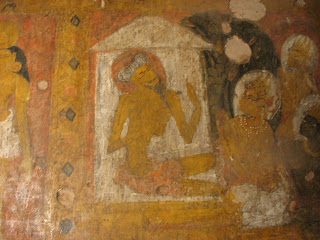We went to Myanmar for Christmas. Ten days of pure tourism. The kids cried when we announced our holiday plans. I debated about going - should we be supporting a military Junta? should we risk getting caught up in post-election violence? should we go just because everyone says it's the most authentic, beautiful and fabulous trip that they ever took in southeast Asia? are the kids old enough to appreciate it?
The answer to all that is YES! (except supporting the junta - of course). In fact, tourism is a way of opening the country to the outside world. The information goes both ways. Post-election violence was limited to the Thai border and we were very far from all of that. Sometimes, if you follow the crowd, you find out what all the hoopla is about and you're glad you did. And the kids LOVED the trip. They will remember it always!
We took over 1500 pictures - the kids contributed. I simply must post and comment. I can't remember the names of all the places. The history and dates escape me as well. So here are my impressions - grouped by themes. I hope it inspires you to go there, read up on it, or at least click on the next blog entry.
Let's get started with my absolute favorite photo - Philippe took this in the countryside somewhere between Inle Lake and Pindaya. The land is all cultivated and it looks almost European - except there are NO tractors - only oxen and plows and there are people in the fields working. These women are harvesting sesame. I love the colors.










































